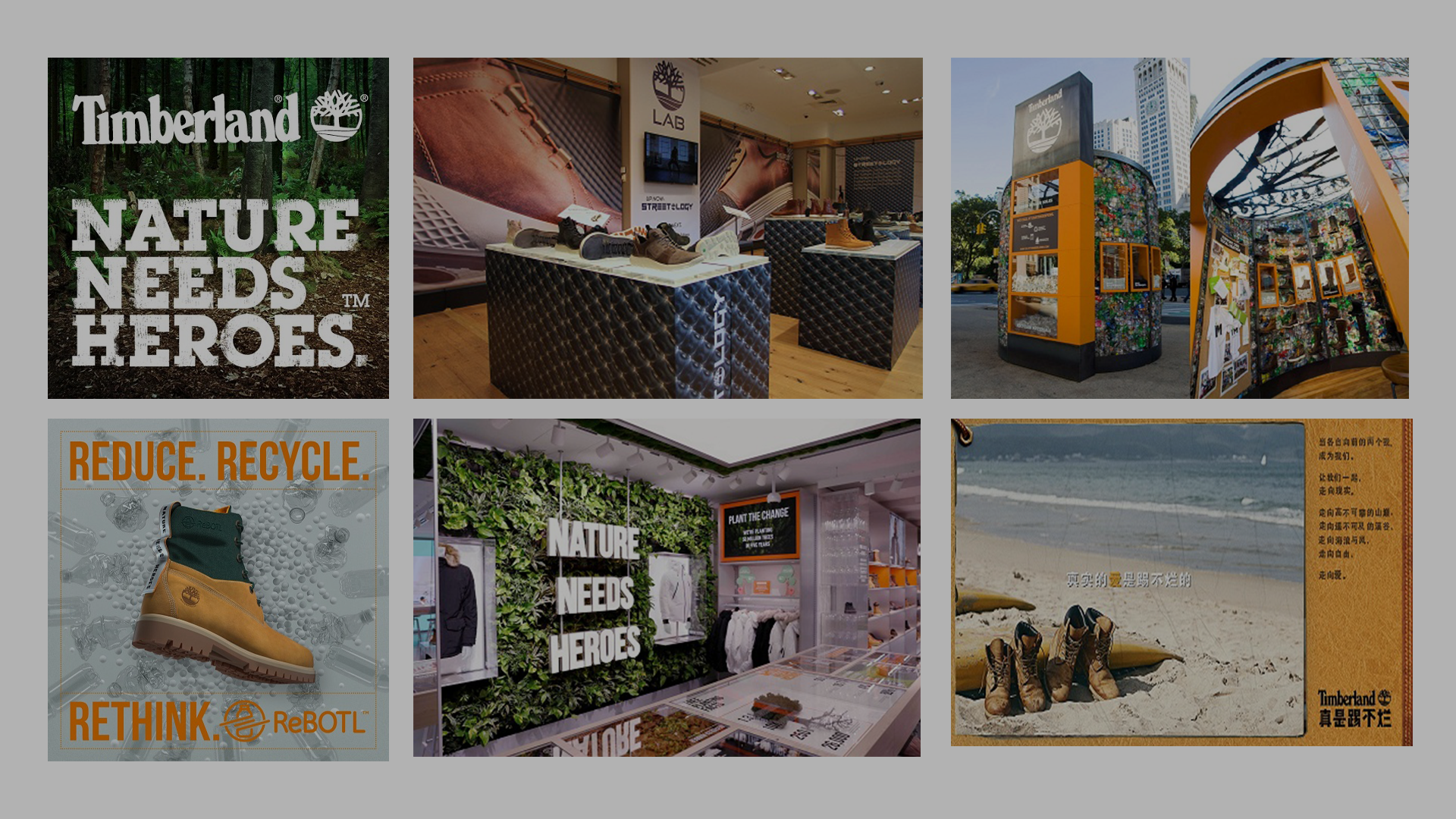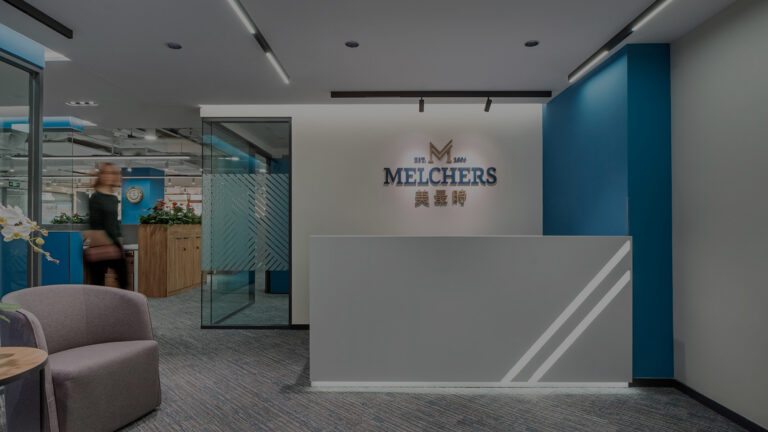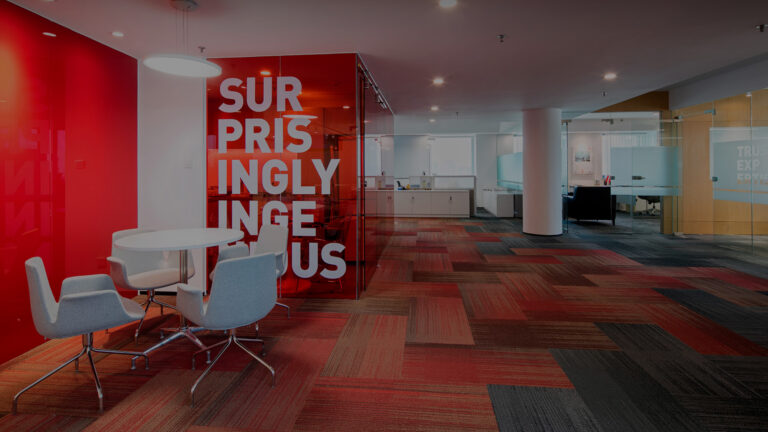Retail stores are an important tool for marketing a retail brand to consumers. By creating a strong first impression from the outside, consumers can enter the retail space to experience and learn more about a brand’s story. Facilitating a smooth consumer journey through retail design increases the purchase likelihood, brand loyalty, and overall sales.
Key Goals of Retail Design
Retail design starts with a concept that achieves key goals for the brand. While the specific goals vary for brands, there are four key design goals that should be keep in mind of retailers which include:
- Brand Story
- Attractive retail window displays
- Retail experience
- Technology integration
When combined into retail design, achievement enables retailers to successfully increase brand awareness and sales.
Telling your Brand Story Increases Brand Awareness
As the well-known saying goes, “knowledge is power.” This is certainly true when it comes to educating customers about a brand, its story, and products. The power behind the knowledge gained by the consumer is that they gain better insight of the brand heritage, realize the quality of the brand’s products, and clearly understand the brand’s core message. These three factors build a stronger awareness of the brand. According to 5W Public Relation’s 2020 consumer report, 71% of consumers prefer to shop with a brand if a brand’s core values align with their personal values.
Our next case study takes a closer look at the American shoe brand, Timberland. In the past 5 years, the brand has undergone a restructure of the visual identity design to highlight key marketing messages of sustainability. Tied to the story of Timberland, the design style of the retail space incorporates interactive elements to provide customers unique experiences that are also tied to their strong CSR message: “Nature Needs Heroes.”
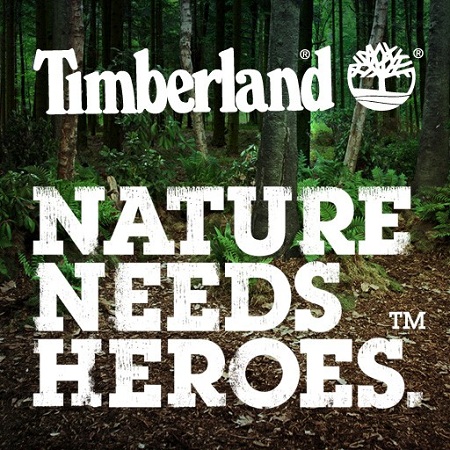
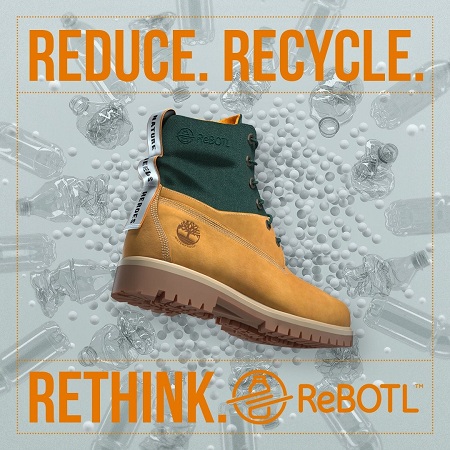
The background of Timberland is a shoe company that set out to provide high quality functional work boots. They had one of the first waterproof shoes on the market. This original function evolved footwear brand into a pop-culture icon as many famous rappers wore and referenced their products in their music.
In recent years the brand listened to their core target consumers by putting a larger focus on sustainable fashion. Over the past decade, the brand further evolved that put sustainability at the forefront of their product design, marketing, and general strategy. At the end of 2019, the brand made an aggressive goal to plant 50 million trees by 2025. As their CSR strategy continues to evolve, the brand needed to adapt the design of their retail stores to better tell their brand story.
Timberland created a unique concept idea called “Flex Retail” this allows them to adapt the store design every six weeks to best fit the theming and products for the season. This concept started with their first “Tree Lab” store at the King of Prussia Mall (PA) back in 2017.

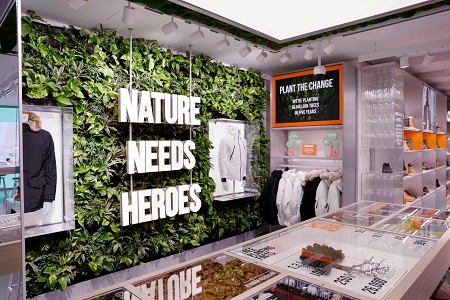
This design concept really helps the brand to be able to better show their brand story and help customers to better understand the brand’s core motives and global impact on the environment.
Following the campaign, the brand also launched a series of pop-up stores in New York City to showcase the brand’s CSR efforts and provide local consumers with immersive spaces that allow them to learn more about the products and brand story of Timberland.
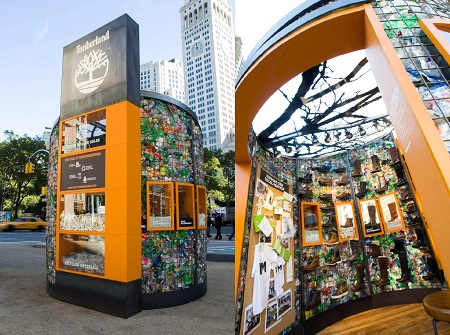
In China the brand took a slightly different approach. While nature and sustainability is still the core message behind Timberland’s brand story, the brand adapted their name in 2016 to be more suitable for Chinese consumers. The campaign changed the name to: “Timberland – It’s Really Teeboolang” which means “Unbreakable” in Chinese.
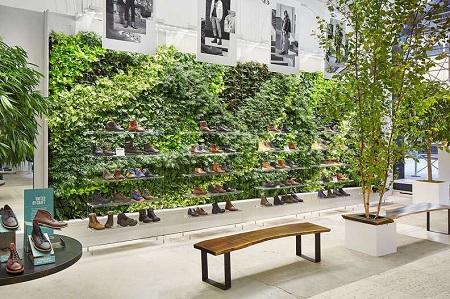
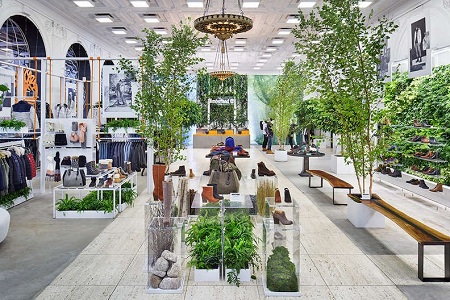
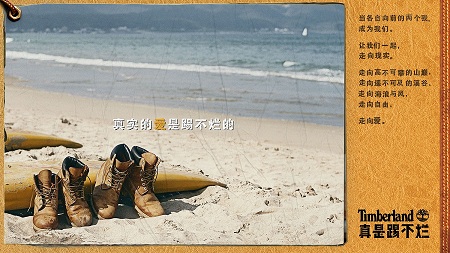
Much of the retail and marketing strategy in the Chinese market focuses on the high quality and reliability of the shoes themselves. Most of Timberland’s retail locations in China reflect this by large product displays focused most on their classic shoe design, and strong brick décor. Tying to the brand’s global marketing message, their stores incorporate a slight touch of greenery and put a larger focus on the sustainable materials used within the products themselves.
Overall, Timberland has found success globally by sharing their brand story with their consumers in a creative way that is strongly reflected in the retail design of their many locations worldwide. As the brand continues to grow and evolve, they will likely deepen their brand story and continue sharing it with their consumers in thoughtfully creative ways to further build stronger brand loyalty. Regardless of where their story takes consumers, it will sure be interesting to see the impact they make if they achieve their goal to plant 50 million trees by 2025!

